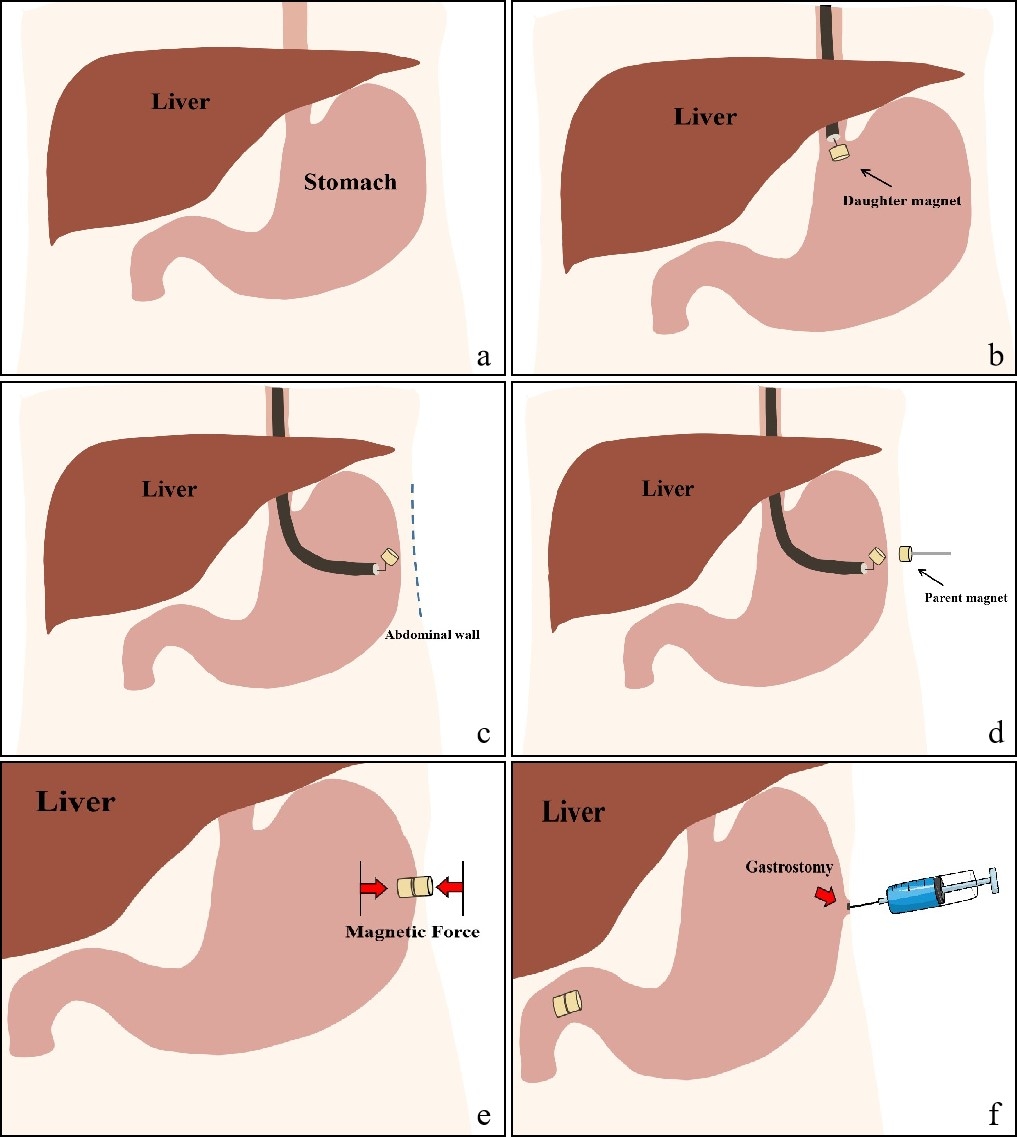Back to 2024 Abstracts
A NOVEL TECHNIQUE OF ENDOSCOPIC MAGNETIC COMPRESSION IN GASTROSTOMY
Fei Xue
*General Surgery, Shaanxi Provincial People's Hospital, Xi'an, Shaanxi, China
Background:Traditional gastrostomy requires anesthesia and laparotomy which always accompany with higher injury risk. Percutaneous endoscopic gastrostomy(PEG) remain relatively safety, but complications of fistula infection, fistula leakage may result from it. In order to achieve a minimally invasive, simple and lower complication rate, gastroscope combined magnetic compression techniques (MCT) to create gastrostomy was introduced.
Methods:The magnets used in the experiment were made of Ti-coated neodymium-iron-boron (Nd-Fe-B). Magnets were designed of basal diameter of 6mm, height of 6mm and center hole diameter is 1mm. The parent magnet was fixed at the superior site of a 6-French catheter, while the daughter magnet was grasp on the top of gastroscope. Four experimental dogs were anesthesia before procedure, the daughter magnet was inserted into gastral cavity endoscopically, right near the anterior of gastric wall and close to the abdominal wall. The parent magnet were placed outside the abdominal wall and located in accordance with the position of daughter magnet. Incise the skin (5mm), separate each layer until the parietal peritoneum, parent magnet was placed subcutaneously into it, the two magnets were attracted under the magnetic force automatically. Withdrawal gastroscope, intravenous infusion needle can be inserted in 6F catheter and punctured through parietal peritoneum and stomach wall, contrast medium was used to verified the establishment of gastrostomy instantly. Tissue harvest was in the 14th day post-operatively, the feasibility of this novel technique were evaluated, fistula patency and mechanical burst pressure were tested.
Results:All dogs survived post-operatively, without bleeding, infection, magnet shedding, displacement and other complications. The parent and daughter magnet attracted and compressed the tissue, resulting in tissue necrosis and fallen. Which was showed in 10th, 11th, 11th, and 12th day post-operatively. A 6mm fistula between the parietal peritoneum and stomach wall can be observed. Then the tissue were harvested in 14th day, mild inflammation response can be observed histopathologically and no leakage was observed in all dogs. Burst pressure of all fistula was greater than 300mmHg.
Conclusion:Endoscopic magnetic compression gastrostomy was a minimal invasive and easily performed procedure, which will be much more applied to patients with advanced tumors, extreme weakness and need enteral nutritional support, it may be used as a novel surgical therapy in the future.
Sponsorship:2023 Natural Science Basic Research Foundation of Shaanxi Province (2023-JC-YB-739)

a. Anatomic relationship between liver and stomach. b. The daughter magnet was inserted into gastral cavity endoscopically. c. Deliver daughter magnet to the anterior gastric wall and close to the abdominal wall. d. The parent magnet was placed outside the abdominal wall and located in accordance with the position of daughter magnet. e. The two magnets were attracted under the magnetic force automatically. f. Magnetic compression resulting in tissue necrosis and fallen in few days, gastrostomy was established.
Back to 2024 Abstracts
